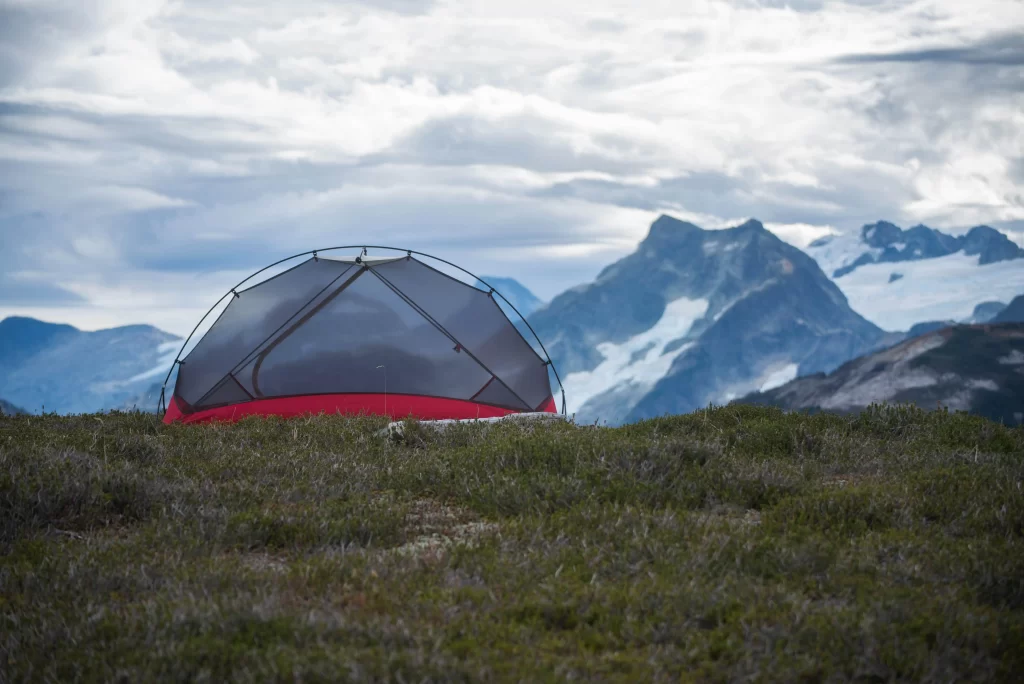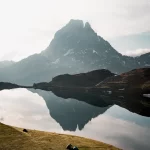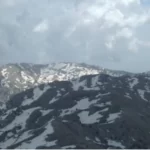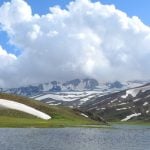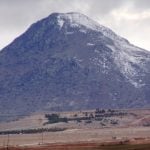How to Choose a Camping Area for Summer Mountaineering?
How to Choose a Camping Area for Summer Mountaineering? When planning a summer mountaineering trip, choosing the right camping area can make all the difference. The right location can provide a comfortable base camp, access to water and other resources, and a safe and secure place to rest and recharge after a long day of climbing.
One of the most important factors to consider when choosing a camping area for summer mountaineering is safety. Mountainous terrain can be unpredictable, and it’s important to choose an area that is safe and secure. This means avoiding areas with steep slopes, unstable terrain, or other hazards that could put you or your group at risk.
Another key factor to consider when choosing a camping area is accessibility. Look for areas that are easily accessible by car, or that are within a reasonable hiking distance from a parking area. This will make it easier to transport gear and supplies to your campsite, and ensure that you have everything you need for a successful trip.
When it comes to choosing a camping area for summer mountaineering, it’s also important to consider the climate and weather conditions. Mountainous areas can be prone to sudden weather changes, and it’s important to choose an area that offers adequate protection from the elements. Look for areas with natural windbreaks, such as trees or boulders, and avoid camping in areas that are prone to flooding or landslides.
Finally, it’s important to consider the impact that your camping area will have on the environment. When camping in the wilderness, it’s important to minimize your impact on the environment and follow Leave No Trace principles. This means packing out all trash and waste, avoiding damaging vegetation or disturbing wildlife, and using established campsites whenever possible.
In conclusion, choosing a camping area for summer mountaineering requires careful consideration of safety, accessibility, weather conditions, and environmental impact. By following these tips, you can find a suitable camping area that provides a safe and enjoyable base camp for your mountaineering adventure. Whether you’re an experienced mountaineer or a novice climber, choosing the right camping area is key to ensuring a successful and rewarding trip.
Research the area
Researching the area before choosing a camping spot is an important step to ensure a safe and enjoyable trip. Here are some tips on how to research the area:
Check the weather forecast: The weather can change rapidly in mountainous areas, and it’s important to know what to expect. Check the weather forecast for the area you plan to camp in and be prepared for any potential weather changes.
Study the topography: Understanding the topography of the area can help you choose a safe and suitable camping spot. Look for flat and level ground, and avoid areas with steep slopes, unstable terrain, or other potential hazards.
Learn about the local wildlife: Knowing about the local wildlife can help you prepare for potential encounters. Find out what types of wildlife are in the area, how to safely store food, and what to do in the event of an encounter.
Check for any regulations or restrictions: Many areas have regulations or restrictions on camping, such as designated campsites or limits on the number of campers. Check with local authorities or park rangers to ensure that you are following all regulations and restrictions.
Read trip reports and reviews: Reading trip reports and reviews from other campers can provide valuable insight into the area. Look for reviews on camping areas, hiking trails, and other relevant information.
Consider the altitude
Considering the altitude of your camping area is an important factor in choosing a suitable spot for your summer mountaineering trip. Here are some tips to help you choose a camping area based on altitude:
Assess your fitness level: Higher altitudes require more physical effort, so it’s important to assess your fitness level before choosing a camping area. If you are not used to high altitudes, consider choosing a camping area with a lower altitude.
Research the altitude of the area: Check the altitude of the area you plan to camp in and find out how it may affect your trip. Higher altitudes mean thinner air, which can make it harder to breathe and require more physical effort.
Acclimate yourself: If you plan to camp at a higher altitude, it’s important to acclimate yourself to the altitude first. Spend a day or two at a lower altitude to allow your body to adjust to the thinner air before camping at a higher altitude.
Bring appropriate gear: Higher altitudes can mean colder temperatures, so make sure to bring appropriate gear to keep you warm. Additionally, consider bringing an altitude sickness medication if you are camping at a significantly higher altitude than you are used to.
Look for flat ground
Looking for a flat ground is crucial when choosing a camping area for summer mountaineering. Here are some tips to help you find a suitable camping spot:
Scout the area: Walk around the area to find a suitable spot to pitch your tent. Look for flat and level ground that is free of rocks and debris. Avoid areas with steep slopes or uneven terrain, as they can be uncomfortable and unsafe.
Consider drainage: Make sure the area you choose has good drainage. Avoid areas that are likely to flood during heavy rain or that have standing water.
Check for vegetation: Avoid pitching your tent on delicate vegetation or in areas that are likely to cause damage to the natural environment. Look for areas that are already disturbed, such as established campsites, to minimize your impact on the environment.
Avoid hazards: Avoid camping near hazards such as cliffs, unstable rocks, or dead trees. These hazards can pose a risk to your safety and the safety of others.
Check for wind direction: Consider the direction of the wind when choosing a camping area. Avoid camping in exposed areas that are likely to be affected by strong winds.
Check for water sources
Checking for water sources is an important consideration when choosing a camping area for summer mountaineering. Here are some tips to help you find a suitable water source:
Research the area: Before you head out on your trip, research the area to find out where the nearest water sources are located. Look for information on the availability of water and whether or not it needs to be treated before drinking.
Bring a water filter or treatment method: Even if you find a reliable water source, it’s important to treat the water to ensure it’s safe to drink. Bring a water filter, purification tablets, or a water treatment system with you on your trip.
Look for a reliable source: When choosing a camping area, look for a reliable water source that is less likely to dry up during the summer months. This could be a river, lake, or spring that is fed by a reliable source of water.
Check for contamination: Be aware of potential sources of contamination, such as human or animal waste, upstream of your water source. Avoid camping or collecting water in areas that are likely to be contaminated.
Consider the distance: When choosing a camping area, consider how far you will need to travel to collect water. Ideally, you want to camp close to a water source to minimize the effort required to collect water.
Consider the weather
Considering the weather is an important factor when choosing a camping area for summer mountaineering. Here are some tips to help you find a suitable camping area that provides adequate shelter from the elements:
Check the weather forecast: Before heading out on your trip, check the weather forecast for the area you plan to camp in. This will give you an idea of what to expect in terms of temperature, precipitation, and wind.
Look for natural windbreaks: When choosing a camping area, look for natural windbreaks such as trees or boulders. These can provide some protection from the wind and help to keep your tent stable during gusts of wind.
Avoid exposed areas: Avoid camping in exposed areas that are susceptible to strong winds or storms. Look for sheltered areas that are protected from the elements.
Consider the terrain: Consider the terrain of the area you plan to camp in. Look for areas that are sheltered by hills, mountains, or other natural features.
Choose a suitable tent: Choose a tent that is suitable for the weather conditions you expect to encounter. A four-season tent is ideal for summer mountaineering, as it provides more protection from the elements than a three-season tent.
Be prepared for sudden weather changes: Even if the weather forecast predicts clear skies, be prepared for sudden weather changes. Bring appropriate clothing and gear to protect yourself from rain, wind, and cold temperatures.
Be mindful of wildlife
Being mindful of wildlife is important when choosing a camping area for summer mountaineering. Here are some tips to help you avoid unwanted encounters with wildlife:
Research the area: Before choosing a camping area, research the area to find out which wildlife species are present. This will help you understand the potential risks and how to avoid them.
Look for signs of wildlife: When you arrive at your camping area, look for signs of wildlife such as tracks, droppings, or scratches on trees. This can help you identify which animals are in the area and where they might be active.
Choose a suitable campsite: Choose a campsite that is away from animal trails or habitats. Avoid areas with food sources, such as berry bushes or streams, as they can attract wildlife.
Store food and trash securely: Store your food and trash in bear-proof containers or hang them from a tree at least 10 feet off the ground and 4 feet away from the trunk. This will help prevent wildlife from accessing your food and trash.
Follow proper safety precautions: Be aware of wildlife safety precautions and follow them at all times. Make noise while hiking to alert wildlife of your presence, avoid hiking alone, and carry bear spray as a last resort.
Follow Leave No Trace principles
Following Leave No Trace principles is crucial when camping in the wilderness, as it helps preserve the natural beauty of the area and minimizes our impact on the environment. Here are some key principles to keep in mind:
Plan ahead and prepare: Before you go camping, plan your trip and make sure you have all the necessary equipment and supplies. This will help you avoid overpacking or underpacking and minimize waste.
Travel and camp on durable surfaces: Stick to established trails and campsites to minimize damage to vegetation and prevent erosion. If you need to camp off-trail, choose a durable surface such as rock or gravel.
Dispose of waste properly: Pack out all trash and waste, including food scraps and toilet paper. Use designated bathroom facilities when available, or dig a small hole at least 200 feet from water sources to bury human waste.
Leave what you find: Do not disturb natural features such as rocks, plants, or wildlife. Leave them as you found them for others to enjoy.
Minimize campfire impact: Use established fire rings or portable stoves for cooking, and never leave a campfire unattended. Make sure the fire is completely extinguished before leaving the area.
Respect wildlife: Observe wildlife from a distance and do not feed or approach them. Keep food and trash secured to avoid attracting wildlife to your campsite.
In conclusion, choosing a camping area for summer mountaineering requires careful consideration of the terrain, weather, wildlife, and regulations. By following these tips, you can find a suitable camping area that provides a safe and enjoyable base camp for your mountaineering adventure.

